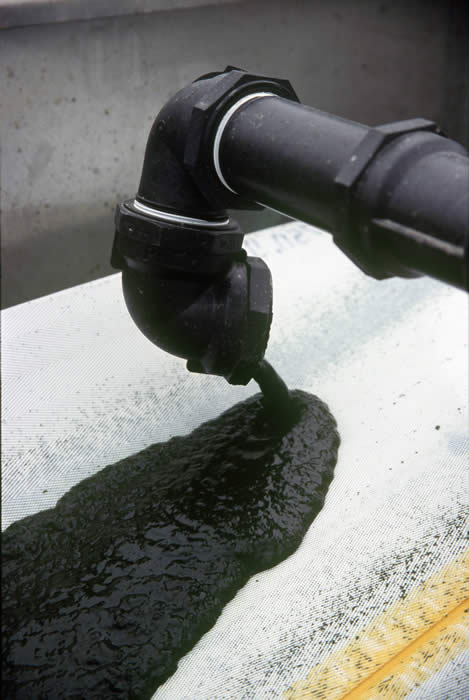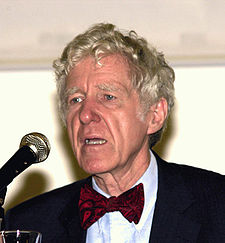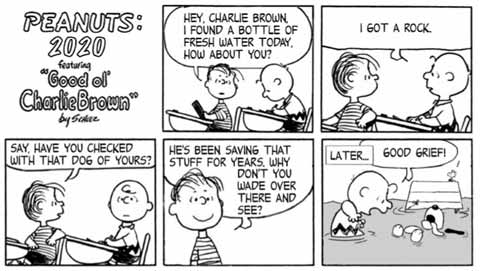 Blenheim company Aquaflow which works on the production of bio-fuel from algae, and whose progress Hot Topic has reported on several times (follow the Aquaflow tag) has announced a new venture, this time in the US. They will be working with a Honeywell company at an industrial site in Hopewell, Virginia. The aim of the project, supported by a $1.5 million cooperative agreement with the US Department of Energy, is to capture CO2 from exhaust stacks and use it to enhance algae growth in nutrient wastewater from the manufacturing facility.
Blenheim company Aquaflow which works on the production of bio-fuel from algae, and whose progress Hot Topic has reported on several times (follow the Aquaflow tag) has announced a new venture, this time in the US. They will be working with a Honeywell company at an industrial site in Hopewell, Virginia. The aim of the project, supported by a $1.5 million cooperative agreement with the US Department of Energy, is to capture CO2 from exhaust stacks and use it to enhance algae growth in nutrient wastewater from the manufacturing facility.
Tag: USA
Lester Brown: US falling out of love with cars
 Lester Brown, author of Plan B 4.0, places more hope for climate stabilisation on shifts that he sees taking place in society and the economy than in internationally negotiated agreements. Not that he rejects such agreements, but he regards them as somewhat obsolete, for two reasons: first, since no government wants to concede too much compared with other governments, the negotiated goals for cutting carbon emissions will almost certainly be minimalist, not remotely approaching the bold cuts that are needed; second, since it takes years to negotiate and ratify the agreements, we may simply run out of time.
Lester Brown, author of Plan B 4.0, places more hope for climate stabilisation on shifts that he sees taking place in society and the economy than in internationally negotiated agreements. Not that he rejects such agreements, but he regards them as somewhat obsolete, for two reasons: first, since no government wants to concede too much compared with other governments, the negotiated goals for cutting carbon emissions will almost certainly be minimalist, not remotely approaching the bold cuts that are needed; second, since it takes years to negotiate and ratify the agreements, we may simply run out of time.
He’s just issued a Plan B update which illustrates the kind of positive changes he sees taking place without the stimulus of global agreements. He announces that America’s century-old love affair with the automobile may be coming to an end. The U.S. fleet has apparently peaked and started to decline. In 2009, the 14 million cars scrapped exceeded the 10 million new cars sold, shrinking the U.S. fleet by 4 million, or nearly 2 percent in one year. While this is widely associated with the recession, it is in fact caused by several converging forces. He sees no reason why the trend of scrappage exceeding new car sales should not continue through to 2020.
The forces at work?
Market saturation for one. The US has five vehicles for every four drivers. “When is enough enough?” Japan apparently reached car saturation in 1990. Since then its annual car sales have shrunk by 21 percent.
Ongoing urbanisation is having an effect. “The car promised mobility, and in a largely rural United States it delivered. But with four out of five Americans now living in cities, the growth in urban car numbers at some point provides just the opposite: immobility.” Public transport schemes are being expanded and improved in almost every US city, and attention being given to more pedestrian and bicycle-friendly streets. Car use in cities is being discouraged.
Economic uncertainty and reluctance to undertake long-term debt is affecting household choices. “Families are living with two cars instead of three, or one car instead of two. Some are dispensing with the car altogether. In Washington, D.C., with a well-developed transit system, only 63 percent of households own a car.”
A more specific uncertainty is the future price of gasoline. Motorists have seen gas prices climb to $4 a gallon, and they worry that it could go even higher in the future.
Finally, Brown points to a declining interest in cars among young people as perhaps the most fundamental cultural trend affecting the future of the automobile. Half a century ago getting a driver’s license and a car or a pickup was a rite of passage. Getting other teenagers into a car and driving around was a popular pastime.
“In contrast, many of today’s young people living in a more urban society learn to live without cars. They socialize on the Internet and on smart phones, not in cars. Many do not even bother to get a driver’s license. This helps explain why, despite the largest U.S. teenage population ever, the number of teenagers with licenses, which peaked at 12 million in 1978, is now under 10 million. If this trend continues, the number of potential young car-buyers will continue to decline.”
If his expectation of shrinkage of the U.S. car fleet is sustained it also means that there will be little need to build new roads and highways. Fewer cars on the road reduces highway and street maintenance costs and lessens demand for parking lots and parking garages. It also sets the stage for greater investment in public transit and high-speed intercity rail.
“The United States is entering a new era, evolving from a car-dominated transport system to one that is much more diversified.”
Brown is ever the optimist, but he seeks to be well grounded. Has he been too quick to discern a trend, or has close attention to emerging possibilities alerted him to something of real promise?
Rage against the machine
 Before I begin the onerous task of catching up with the posts left undone by a fortnight of tourism and hospitality (old friends, in NZ), I’d like to draw your attention to a most interesting piece by Naomi (No Logo) Klein in the current Rolling Stone. Titled Climate Rage, it’s a thorough examination of the issue of climate debt — the need to recognise two things in any climate deal: that the developed world got rich by using up and exceeding the atmosphere’s “headroom” for greenhouse gases, and that the ones who suffer first and most severely will be the developing world, who played no part in creating the problem.
Before I begin the onerous task of catching up with the posts left undone by a fortnight of tourism and hospitality (old friends, in NZ), I’d like to draw your attention to a most interesting piece by Naomi (No Logo) Klein in the current Rolling Stone. Titled Climate Rage, it’s a thorough examination of the issue of climate debt — the need to recognise two things in any climate deal: that the developed world got rich by using up and exceeding the atmosphere’s “headroom” for greenhouse gases, and that the ones who suffer first and most severely will be the developing world, who played no part in creating the problem.
“If we are to curb emissions in the next decade, we need a massive mobilization larger than any in history,” [Angelica] Navarro [climate negotiator for Bolivia] declared at the end of her talk. “We need a Marshall Plan for the Earth. This plan must mobilize financing and technology transfer on scales never seen before. It must get technology onto the ground in every country to ensure we reduce emissions while raising people’s quality of life. We have only a decade.”
Klein reviews the calls for climate equity coming from the developing world, and the inadequacy of the responses currently on offer. She highlights the frustration felt:
The developing world has always had plenty of reasons to be pissed off with their northern neighbors, with our tendency to overthrow their governments, invade their countries and pillage their natural resources. But never before has there been an issue so politically inflammatory as the refusal of people living in the rich world to make even small sacrifices to avert a potential climate catastrophe. In Bangladesh, the Maldives, Bolivia, the Arctic, our climate pollution is directly responsible for destroying entire ways of life — yet we keep doing it.
If you read nothing else today, read this.
Obama to UN: Let’s do it
 Obama’s speech at the UN yesterday may have disappointed some commentators who were looking for more specifics for progress than he provided, but from another perspective it was a most notable occasion. The world’s leading politician, speaking in a global forum, was unequivocal about the seriousness of the issue of climate change:
Obama’s speech at the UN yesterday may have disappointed some commentators who were looking for more specifics for progress than he provided, but from another perspective it was a most notable occasion. The world’s leading politician, speaking in a global forum, was unequivocal about the seriousness of the issue of climate change:
That so many of us are here today is a recognition that the threat from climate change is serious, it is urgent, and it is growing. Our generation’s response to this challenge will be judged by history, for if we fail to meet it – boldly, swiftly, and together – we risk consigning future generations to an irreversible catastrophe.
No nation, however large or small, wealthy or poor, can escape the impact of climate change. Rising sea levels threaten every coastline. More powerful storms and floods threaten every continent. More frequent drought and crop failures breed hunger and conflict in places where hunger and conflict already thrive. On shrinking islands, families are already being forced to flee their homes as climate refugees. The security and stability of each nation and all peoples – our prosperity, our health, our safety – are in jeopardy. And the time we have to reverse this tide is running out.
But he affirmed that we can achieve this reversal. Acknowledging the slowness of mankind to respond to or even recognise the magnitude of the threat, in which the US has shared, he proclaimed a new era, evidencing the fact that the United States has done more to promote clean energy and reduce carbon pollution in the last eight months than at any other time in its history.
He then went on to list what the US government was planning.
We’re making our government’s largest ever investment in renewable energy – an investment aimed at doubling the generating capacity from wind and other renewable resources in three years. Across America, entrepreneurs are constructing wind turbines and solar panels and batteries for hybrid cars with the help of loan guarantees and tax credits – projects that are creating new jobs and new industries. We’re investing billions to cut energy waste in our homes, buildings, and appliances – helping American families save money on energy bills in the process. We’ve proposed the very first national policy aimed at both increasing fuel economy and reducing greenhouse gas pollution for all new cars and trucks – a standard that will also save consumers money and our nation oil. We’re moving forward with our nation’s first offshore wind energy projects. We’re investing billions to capture carbon pollution so that we can clean up our coal plants. Just this week, we announced that for the first time ever, we’ll begin tracking how much greenhouse gas pollution is being emitted throughout the country. Later this week, I will work with my colleagues at the G20 to phase out fossil fuel subsidies so that we can better address our climate challenge. And already, we know that the recent drop in overall U.S. emissions is due in part to steps that promote greater efficiency and greater use of renewable energy.
This last sentence bears out Lester Brown’s claim that the reduction in US emissions was not all down to the recession. The announcements about tracking greenhouse gas pollution and working with the G20 to phase out fossil fuel subsidies are new developments. The G20 includes Saudi Arabia.
Obama then went on to point to the most important US development of all, the energy and climate bill “that would finally make clean energy the profitable kind of energy for American businesses and dramatically reduce greenhouse gas emissions”. It has already passed in the House of Representatives and he spoke of his intention to engage with Senate committees as the bill progressed there.
Moving on to the international scene he spoke of US actions to engage with other nations:
Because no one nation can meet this challenge alone, the United States has also engaged more allies and partners in finding a solution than ever before. In April, we convened the first of what have now been six meetings of the Major Economies Forum on Energy and Climate here in the United States. In Trinidad, I proposed an Energy and Climate Partnership for the Americas. We’ve worked through the World Bank to promote renewable energy projects and technologies in the developing world. And we have put climate at the top of our diplomatic agenda when it comes to our relationships with countries from China to Brazil; India to Mexico; Africa to Europe.
His summation at this point justifiably used the word historic:
Taken together, these steps represent an historic recognition on behalf of the American people and their government. We understand the gravity of the climate threat. We are determined to act. And we will meet our responsibility to future generations.
Then on to the hard part ahead:
But though many of our nations have taken bold actions and share in this determination, we did not come here today to celebrate progress. We came because there is so much more progress to be made. We came because there is so much more work to be done.
It won’t be easy and the difficulties are compounded by the global recession
The developed countries that have caused much of the climate damage to the present have a responsibility to lead. But the rapidly-growing developing nations that will produce nearly all the growth in global carbon emissions in the decades ahead must do their part as well. He acknowledged that some of them have already made great strides with the development and deployment of clean energy.
We cannot meet this challenge unless all the largest emitters of greenhouse gas pollution act together. There is no other way.
He differentiated the other poorer and most vulnerable developing nations and their need to be put on the path to sustainable growth. They don’t have the resources of nations like the US or China, but they have the most immediate stake in a solution.
For these are the nations that are already living with the unfolding effects of a warming planet – famine and drought; disappearing coastal villages and the conflict that arises from scarce resources. Their future is no longer a choice between a growing economy and a cleaner planet, because their survival depends on both. It will do little good to alleviate poverty if you can no longer harvest your crops or find drinkable water.
That is why we have a responsibility to provide the financial and technical assistance needed to help these nations adapt to the impacts of climate change and pursue low-carbon development.
No argument with Oxfam here.
So where does the world now stand?
As we meet here today, the good news is that after too many years of inaction and denial, there is finally widespread recognition of the urgency of the challenge before us. We know what needs to be done. We know that our planet’s future depends on a global commitment to permanently reduce greenhouse gas pollution. We know that if we put the right rules and incentives in place, we will unleash the creative power of our best scientists, engineers, and entrepreneurs to build a better world. And so many nations have already taken the first steps on the journey towards that goal.
And a final summons to sustained effort:
But the journey is long. The journey is hard. And we don’t have much time left to make it. It is a journey that will require each of us to persevere through setback, and fight for every inch of progress, even when it comes in fits and starts. So let us begin. For if we are flexible and pragmatic; if we can resolve to work tirelessly in common effort, then we will achieve our common purpose: a world that is safer, cleaner, and healthier than the one we found; and a future that is worthy of our children.
Yes, it’s rhetoric. But it’s without precedent. It’s committed and definite. It carries with it a logic that demands expression in concrete effective measures. It acknowledges the political difficulties but asserts they must be overcome. I think we may take comfort and courage from it. It looks like David Orr’s transformational leadership to me.
“We’re screwed” – New York tabloid bites climate bullet
 The New York Post, Rupert Murdoch’s tabloid flagship in the big apple, has published a “special edition” to welcome the 100 world leaders who are gathering in the city to discuss climate change at the UN. Screaming in best tabloid fashion “We’re Screwed”, the paper paints a telling picture of what life will be like for New Yorkers as their climate changes. Under headlines like Congress to New York: Swim For It, the paper examines the stark reality of current policies on climate change, but also finds space for Pam’s Pom-Poms (left). And the outlook for beagles when sea level rise hits is sad indeed… Cat lovers should avoid Calvin & Hobbes, but the Wizard of Id is on form.
The New York Post, Rupert Murdoch’s tabloid flagship in the big apple, has published a “special edition” to welcome the 100 world leaders who are gathering in the city to discuss climate change at the UN. Screaming in best tabloid fashion “We’re Screwed”, the paper paints a telling picture of what life will be like for New Yorkers as their climate changes. Under headlines like Congress to New York: Swim For It, the paper examines the stark reality of current policies on climate change, but also finds space for Pam’s Pom-Poms (left). And the outlook for beagles when sea level rise hits is sad indeed… Cat lovers should avoid Calvin & Hobbes, but the Wizard of Id is on form.

[Hat tip: Sonny, and thanks to this lot.]
